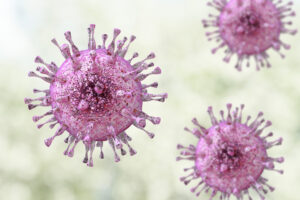
Risk Management
| << Back | Download |
Safe Practices in the Office: COVID-19
 OMIC Risk Management is committed to supporting our insureds as they establish protocols to address COVID-19 in the office. The best sources for the latest scientific information and safety guidelines remain the AAO, the CDC, and your local health authorities.
OMIC Risk Management is committed to supporting our insureds as they establish protocols to address COVID-19 in the office. The best sources for the latest scientific information and safety guidelines remain the AAO, the CDC, and your local health authorities.
Here are some key concepts to consider that will protect you, your staff, and your patients.
We have included links to relevant topics and guidelines published by the U.S. Centers for Disease Control and Prevention (CDC), as well as guidelines from the American Academy of Ophthalmology (AAO).
Assess risks for staff and patients and establish safety protocols
Create an easy-to-read reminder sheet about safety precautions, such as these from the CDC that can be posted at workstations, in exam rooms and waiting areas:
- Wash hands often with soap and water for at least 20 seconds
- If soap and water are not available, use an alcohol-based hand sanitizer with at least 60 percent alcohol
- Avoid close contact with people who are sick
- Avoid touching your eyes, nose, and mouth
- Cover your cough or sneeze with a tissue, then throw the tissue in the trash, and wash your hands
- Clean and disinfect frequently touched objects and surfaces
- Stay home when you are sick
Establish protocols for patient screening on the telephone and at the office
AAO recommendations [https://www.aao.org/headline/alert-important-coronavirus-context]:
- When phoning about visit reminders, ask to reschedule appointments for patients with nonurgent ophthalmic problems who have respiratory illness, fever or returned from a high-risk area within the past 2 weeks [see additional OMIC recommendations below].
- Patients who come to an appointment should be asked prior to entering the waiting room about respiratory illness and if they or a family member have traveled to a high-risk area in the past 14 days. If they answer yes to either question, they should be sent home and told to speak to their primary care physician.
- Sick patients who possibly have COVID-19 with an urgent eye condition can be seen, but personal protective equipment should be worn by all who come in contact with the patient. The CDC’s recommendations for personal protective equipment include gloves, gowns, respiratory protection and eye protection. Place a facemask on the patient and isolate them in an examination room with the door closed; use airborne infection isolation rooms (AIIR) if available.
- Keep the waiting room as empty as possible, and reduce the visits of the most vulnerable patients.
- Several reports suggest the virus can cause conjunctivitis and possibly be transmitted by aerosol contact with conjunctiva.
- Patients who present to ophthalmologists for conjunctivitis who also have fever and respiratory symptoms including cough and shortness of breath, and who have recently traveled internationally, particularly to areas with known outbreaks (China, Iran, Italy, Japan, and South Korea), or with family members recently back from one of these countries, could represent cases of COVID-19.
- The Academy and federal officials recommend protection for the mouth, nose and eyes when caring for patients potentially infected with SARS-CoV-2.
- The virus that causes COVID-19 is very likely susceptible to the same alcohol- and bleach-based disinfectants that ophthalmologists commonly use to disinfect ophthalmic instruments and office furniture. To prevent SARS-CoV-2 transmission, the same disinfection practices already used to prevent office-based spread of other viral pathogens are recommended before and after every patient encounter.
OMIC recommendations:
- Provide written questions for staff to ask patients to determine health/recent travel status.
- Provide written questions for staff to ask patients to help determine which problems are urgent (patient needs to be seen) or nonurgent (appointment can be rescheduled).
- Document the conversation about the eye condition and warnings. To facilitate documentation, prepare a sheet with the questions, and put in the medical record, or scan into the EHR.
- Provide written instructions for staff on when to get input from an ophthalmologist and what urgent problems need to be reported to an ophthalmologist right away.
Review your cleaning and disinfecting protocol and revise as needed to meet guidelines
AAO recommendation:
Rooms and instruments should be thoroughly disinfected afterward based on current CDC recommendations specific to COVID-19. Slit lamps, including controls and accompanying breath shields, should be disinfected after every patient, particularly wherever they put their hands and face.
OMIC recommendation:
- For further guidance see https://www.cdc.gov/infectioncontrol/guidelines/index.htmlhttps://www.cdc.gov/coronavirus/2019-ncov/healthcare-facilities/guidance-hcf.html
Train all staff and physicians about the new protocols
- Review the phone records periodically to ensure staff are following the guidelines appropriately.
- Retrain after changes to the protocols.
OMIC policyholders are encouraged to use our confidential Hotline. The fastest way to reach us is to contact
our confidential Risk Management Hotline by emailing riskmanagement@omic.com or calling 800-562-6642, option 4.






